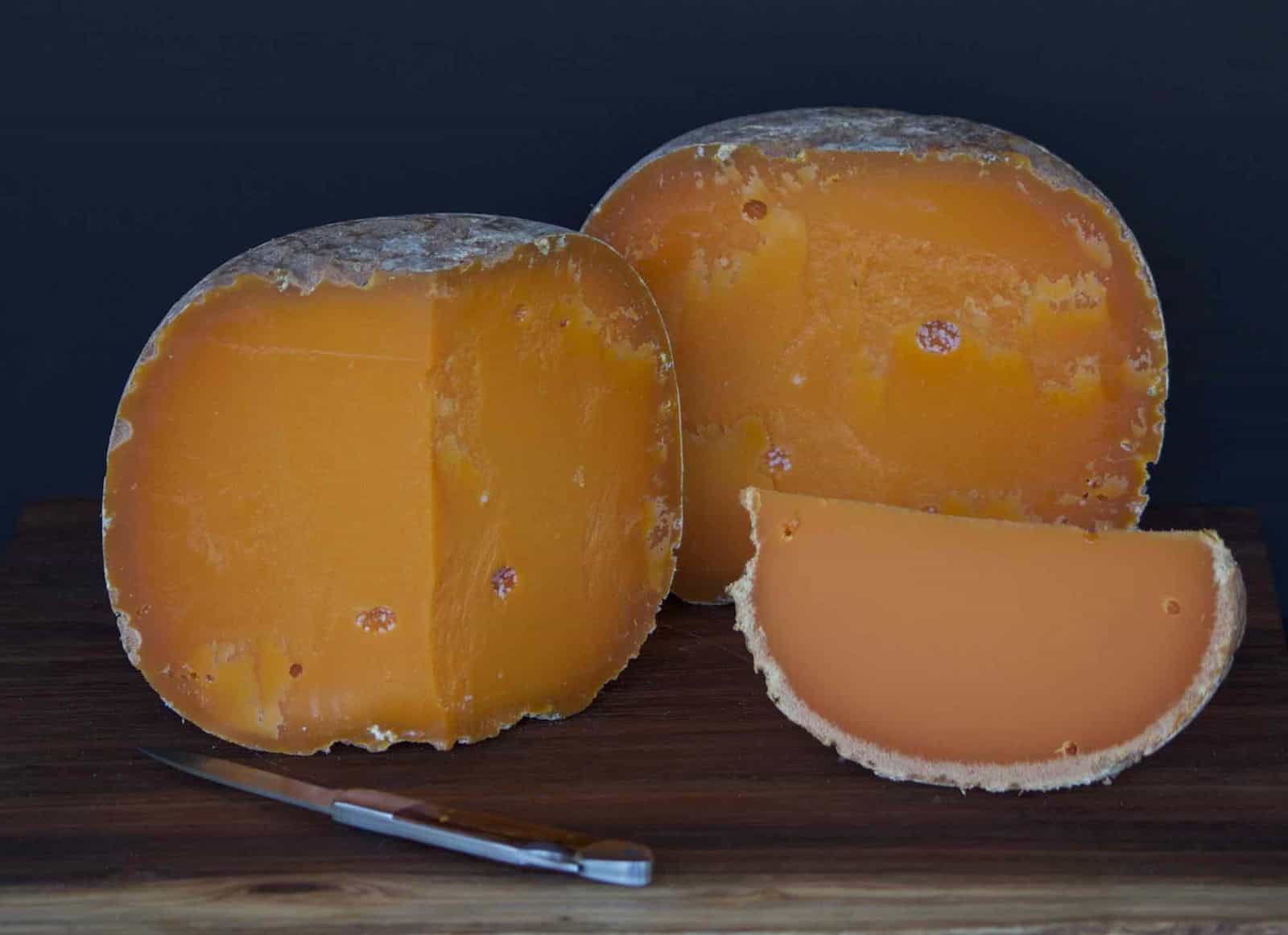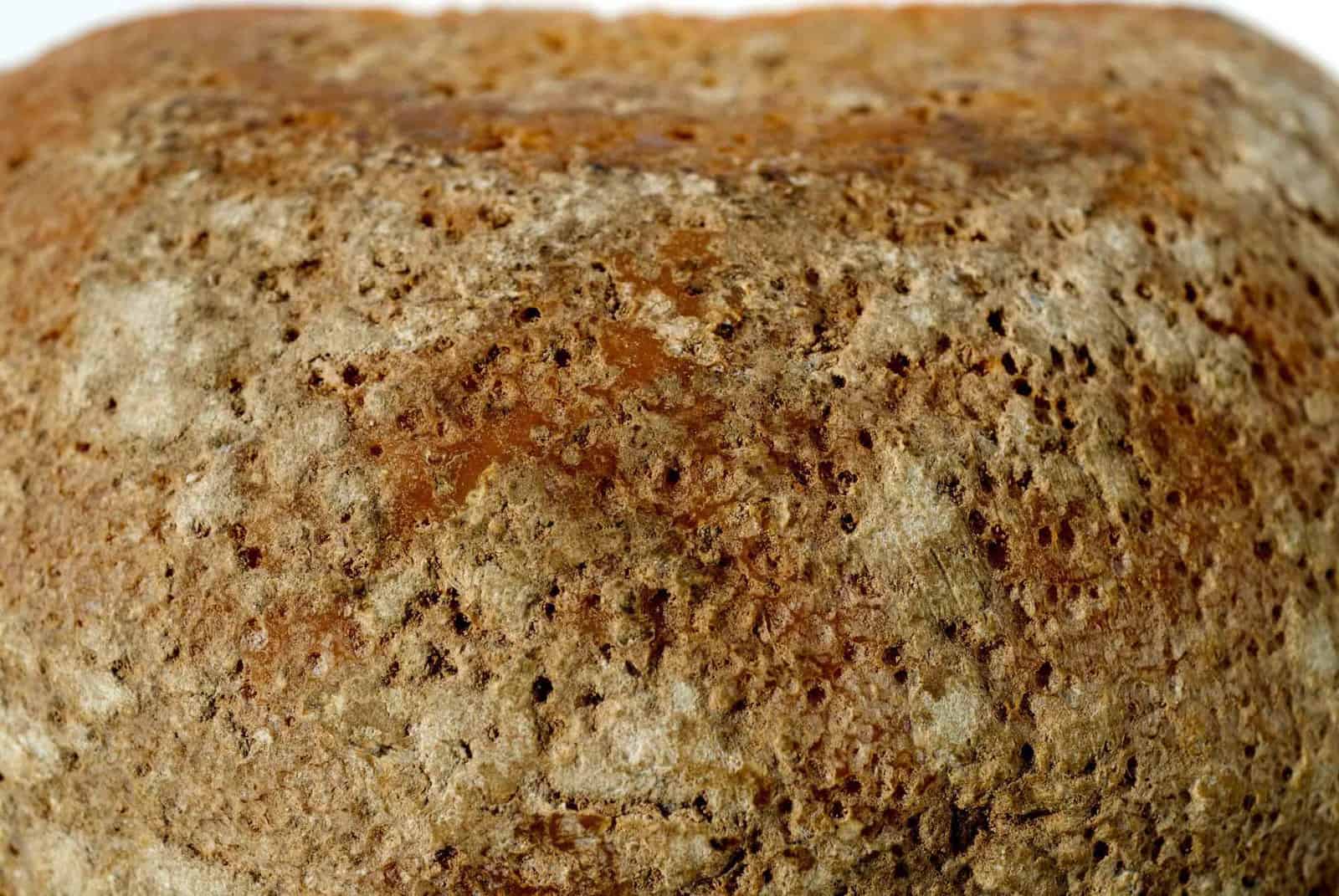
With a pocked rind and unmistakable orange interior, Mimolette is one of France’s most easily-identifiable cheeses. Traditionally produced in the northern French county of Flanders, this pasteurized cow’s milk cheese is generally believed to be an interpretation of the Dutch cheese Edam.
In the 17th century, France was importing significant quantities of cheese from the Netherlands. During the Franco-Dutch war (1672-1678) trade was halted, ceasing importation of locally popular Edam. French finance minister Jean-Baptiste Colbert commissioned cheesemakers in Flanders to develop a substitute, insisting the interior have a distinctive color to distinguish it from the original.

Production
Mimolette is classified as a washed-curd cheese. After pasteurization and addition of lactic bacteria and rennet, the curd is cut into tiny grains which are then steeped in hot water to ‘wash’ them. This process yields a cheese with a less-acidic taste and a smooth texture. Cheesemakers also add Annatto pigment to create that signature color.
An important component of Mimolette’s development during affinage is the use of microscopic cheese mites. These “little affineurs”, as the French call them, create tiny holes essential to the cheese’s ripening and development. Caring for Mimolette includes the regulation of mite colonies to ensure the cheese matures properly.
Wheels weigh between five and eight pounds, and resemble a slightly-flattened sphere similar to a cantaloupe. Often consumed when aged between two and three months, versions aged up to two years are sometimes available. Except during a brief period (2013-2014) when the US FDA prohibited importation due to the use of mites, Mimolette can be found in many specialty cheese shops. The cooperative of Isigny Sainte-Mère is a prominent producer, offering cheeses in young, semi-young, mature, and extra-mature ages.

Tasting Notes & Pairing
Mimolette is dense and smooth with a fudge-like texture. Nuttiness and hints of salt complement the sweet butterscotch tones. The flavors are complex and mouth-filling, with a finish that increases in sharpness and intensity. Because of the natural malty richness, it pairs well with beverages that emphasize its creamy character. Try oak-aged ales or stouts. Rustic wines with notes of earth counter its intensity nicely: French Malbec, Carignan, or Cabernet Sauvignon will do the trick.




